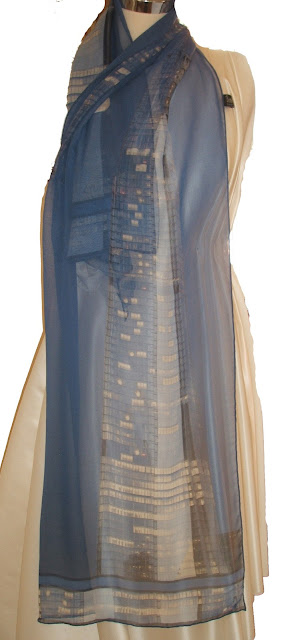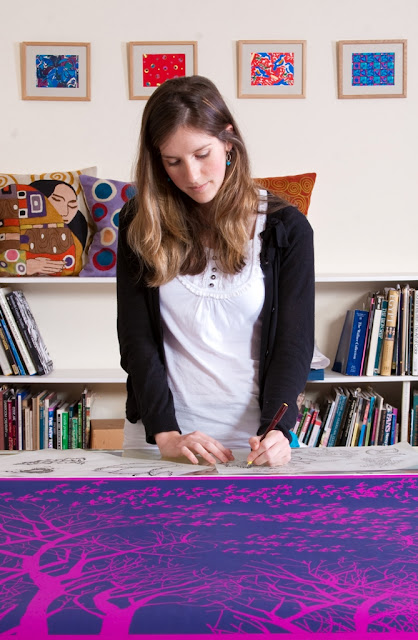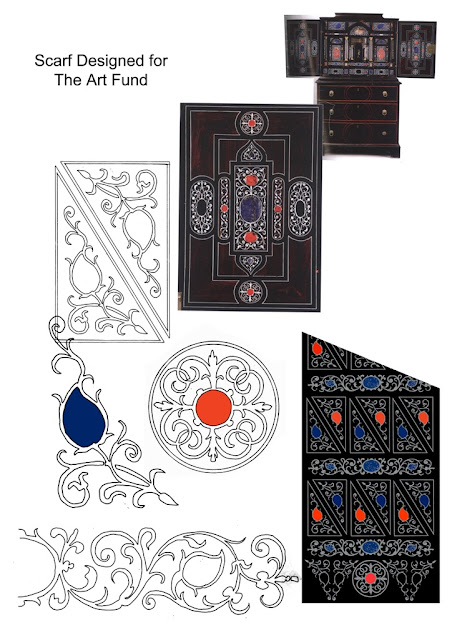| My name is Robbie and I'm in charge of digital printing at Beckford Silk |
About a year ago Beckford Silk invested in a 'New' digital printer... I say new but it was a demonstration model. It is named TX 5 and is a hybrid of a printer and belt roller, the roller is to secure the fabric down for printing. Although this technology has been around for some time, and I'm sure most of you have a paper printer somewhere around the house. This is (only) slightly different: the main difference is that it weighs and is about the size of a car, although the printing heads are almost the same as for ordinary paper printers, the 8 colour process uses Acid dyes (the same type that we use for our hand printing, only more refined). And the fabric is fed on with this large self-cleaning belt system. Basically, it is a printer and you press buttons to make it work.
| Our digital printer |
So why would a traditional Hand-printing business invest in such outlandish tech? Well, it’s because we have almost 40 years of hand-printing experience, so the time seemed right. Not to mention that digital printers have now got to a level where the quality is good enough to compete with flat colour pushed through a screen.
But where is the skill? True, all I do all day is stand and watch 'printer-head tennis', while pulling out tiny creases from meters upon meters of silk. But, to get to this point has been a real battle! You see, you can't just get a roll of fabric and flatten it paper thin and print on it. The material must be treated first, with the exact same recipe that we use to mix our dye for hand printing. I must coat the silk with a mixture of starch-gum, urea and Ammonium-sulphate... basically, it stops the ink from bleeding out as soon as it touches the fabric, and then helps the colours to 'pop' and connect with the silk in the steaming process. So once I have coated it... and if anyone reading this has ever done this process: I coat using a winch, and a centrifugal spinner (which you will know can't be done and I must be mad for trying it, how could you possibly...etc) True my methods maybe old-fashioned and unusual, but you know what... it works. So once it has been coated it must be dried and straightened. This is done with our pre-war machine that is called a stenter (I'm not going to go into what a stenter is, but basically a big machine that dries and stretches fabric) and carefully we batch the silk off as straight as we can onto a roll for printing. Now straightness is important. When I say straightness, I am referring to the weft (the strand across fabric when it is woven) if it’s not straight, then when I put it through the printer, the scarves will come off looking like a Salvador Dali painting! Now other printers out there will know that this straightness is the key, although many will not print scarf panels so will not be as affected as we are. And so affected are we by this, that my father and I have created a special top-secret straightening machine... ok so it's not so top, and we are not much for secrets. But explaining it in this format would put my head in to knots (not that it’s technical), so maybe just come to Beckford silk and I’ll show you how it works.
| Rolling machine |
So once we have our perfect roll of fabric, and our amazing designer has created a masterpiece of a design, and we have printed it. Then it goes through the same process as the hand printing does, steaming, washing, drying, and finally finishing, which for us is either hand-rolling or machine hemming.
So that is it from our digital printer for the moment, not much of a ‘day in the life of’, more of a ‘how-does-it-work’, but nonetheless (and hopefully?) 'captivating stuff.' Please feel free to come and see our printing, hand and digital and also visit our website at www.beckfordsilk.co.uk






